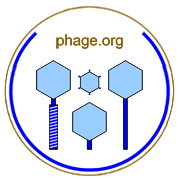

Experiment designed to examine only one round of infection by a population of phages.
Typically single-step growth experiments involve a synchronization of phage adsorption, a means by which subsequent (post-lysis) rounds of phage infection as well as post-lysis phage adsorption to already infected bacteria – secondary adsorption – are thwarted (such as by diluting cultures), and keeping track of phage population growth in terms of infective centers, i.e., plaque formation.
In addition, phage multiplicities of infection are often kept well below one and effort can be made to remove unadsorbed phages following the synchronization step. The former assures that mostly single infections are followed experimentally while the latter assures that mostly infections rather than free phages are initially followed, which is important towards burst-size determination.
Single-step growth experiments are a means of obtaining information about phage burst size and latent period. With artificial lysis of infected bacteria, the eclipse can be determined as well.
Note that burst size also can be determined via end-point determinations, though with less confidence in the resulting data (since there is no assurance that complete phage population lysis in fact has occurred). Similarly, latent periods can be approximated using lysis-profile assays, though if the goal is to approximate single-step growth then effort must be made to assure that phage secondary adsorption does not occur.
For more on this topic, see Wikipedia, Google, and PubMed (Alt). Contact web master. Return to terms.